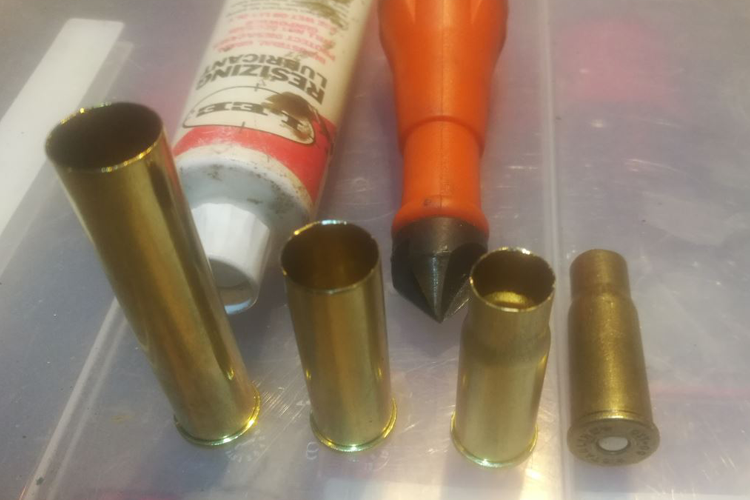
09/12/2020 | Hints from the experts
Centrefire cases for the Vetterli Mod 1869/1881 rifle
The 1869 Vetterli rifle and its subsequent developments in 10.4 mm calibre were designed for a 38 mm long rimfire cartridge. With 4 grains of black powder and a 20.14 gram Minié bullet, the rifle developed a muzzle velocity of 435 m/s.
Today, of course, rimfire cartridges are no longer available. Additionally, it is virtually impossible to reload these cartridges. Consequently, most shooters who shoot Vetterli rifles convert these to centrefire. This is very easy to do, e.g. by removing the front, forked part of the two-piece firing pin and soldering a 2 mm (temperable) pin centrally to the rear piece of the firing pin using hard solder. Then drill a 2.1 mm borehole in the centre of the bolt head (Fig. 1). This is easy to do on a lathe.
On to the ammunition: The cases should largely correspond to the original cartridges in the base and neck areas. These have a diameter of 13.4 mm at the neck and 13.6 mm at the base. The rim has a diameter of 15.8 mm. The cartridge is 38 mm long.
A case in 50-110 calibre serves as the basis for a replacement. It is slightly conical and has a diameter of 13.5 mm at the opening and 13.8 mm at the base (cases from Starline®). At a length of 61 mm, it is of course much too long. After some research online, I decided to use a case length of 41 mm for my Vetterli rifle. A chose a case 3 mm longer than the original because I wanted to shoot 15.3 g (235 grain) instead of 20 g bullets, and I wanted the seating depth of the lead bullet in the cartridge to be similar. I also expect a better seal from the longer neck when the cartridge is fired.
First, shorten the case to 42 mm on a lathe (Figure 2), and deburr it here as well. Then deburr the inside of the turned case using a hand tool.
For resizing my cases, I use the two-die set from Lee® Precision, 4275 Country Road U, Hartford, Wisconsin, USA. It is very important to grease the deburred cases with resizing lubricant. Lee® resizing lube provides the best results here as well (attempts with light oil or MoS2 grease resulted in cracks in the base). I modified the bullet seating and crimp die by replacing the inside bullet centring tool with a turned steel piece that provides extremely close guidance in the top part of the die and has a 4 mm screw on top that fits through a matching hole in the aluminium head of the die. This allows me to watch the bullet seating process to make sure that it is not misaligned (Figure 3).
The case is then shortened to the proper length using a case trimmer, deburred inside and out and a primer inserted.
For my loads, I use self-cast and sized hard lead bullets (Brinell hardness of 10.4 BNH) weighing 275 grains (15.3 grams) with two lube grooves. My powder of choice is Reload Swiss RS36. I have measured muzzle velocities of 380 m/s with a load of 24 grains (1.55 grams) and 440 m/s with 26 grains (1.68 grams). I use the RWS large rifle primer for both loads.
These loads do not fill the cases, so I place loose cotton wool on each charge.
Using a calculation similar to Dominik Antenen, I have estimated the pressure at approx. 1,300 bar for 26 grains (1.68 grams) of RS 36. This is slightly less than the 1,400 bar (20,000 psi) quoted for the Vetterli rifle with black powder.
Figure 5 shows the loading tools with RS 36 powder, primer, case dies, bullet sizing die, original cases, sized and loaded Vetterli case, bullet, home-made bullet mould and cotton wool.
Here too, please note that every shooter is responsible for the cartridges they load, and that I assume no responsibility for the load data and results provided here.
With best regards
Dr. Ulrich Daum